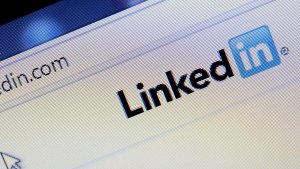LinkedIn advertising provides many powerful benefits for companies looking to engage a professional audience.
Is Your Business Leveraging The Power Of LinkedIn Advertising?
LinkedIn advertising provides many powerful benefits for companies looking to engage a professional audience.

The benefits of social media advertising are undeniable. It can help businesses with finding and attracting new audiences, crafting strong brand messaging and, crucially, driving sales.
However, choosing the right social media platform is vital to realising the full potential of your paid social campaigns. LinkedIn, in particular, offers multiple features and benefits, along with detailed, granular ad targeting that puts it into a class of its own depending on your business and marketing goals.
Many companies, especially B2B firms, have not properly considered LinkedIn, with a common concern that it is more expensive than other platforms.
Despite this, the detailed targeting options can offset higher cost per clicks, and more businesses seem to be cottoning on to this fact. So much so, that between 2018 to 2023, B2B ad spend rose from $0.65 billion USD to $2.33 billion USD on the platform.
So, what are some of the key benefits of LinkedIn advertising, and how can you use it to bolster your own business and marketing objectives?
Getting granular
While platforms such as Facebook offer the ability to target audiences based on interests and behaviours, they cannot hold a candle to the vast variety of LinkedIn’s targeting options. Along with industry-specific factors which include variables such as company size, degree type, job title, skills and more, LinkedIn also offers the ability to upload a list of target companies and then overlay these industry factors. This provides a very effective way of targeting an account list that your sales team have.
The ability to include and exclude these variables as desired opens up the capacity to serve highly targeted ads in a way that simply isn’t possible on other social media platforms, and is of particular interest to B2B companies, or businesses wanting to target specific, professional audiences.
Privacy vs. personalisation
Third-party data has become a major topic of concern for marketers and audiences alike. With tech companies like Apple and Google moving increasingly away from a reliance on third-party data and cookies, it’s become absolutely necessary for advertisers to follow suit, and adapt to changing expectations around data privacy.
LinkedIn poses fewer privacy concerns in this regard, as it relies primarily on self-reported, or first-party, data. In serving up ads, LinkedIn is able to use what audiences freely share about themselves to deliver better relevance and targeting options for advertisers, while still upholding the expectations of user privacy. Additionally, because LinkedIn uses minimum audience sizes, it prevents ads from being too specifically targeted, meaning ads won’t come across as creepy or hyper-specific to one team or company.
Leading lead generation
Compared with other platforms, LinkedIn offers a powerful way to generate leads, especially for B2B firms. One of the biggest barriers to effective lead generation is friction – extra steps that can cause a user to lose interest as a prospect. LinkedIn’s lead capture forms, which auto-fill user information, help to eliminate some of this friction, keeping users on the platform and boosting engagement with the lead magnet.
As well as lead generation, the platform also provides more ways to retarget and nurture leads. It’s Lead Accelerator feature is useful for tracking promising prospects, and serving them with highly targeted ads to better nurture them into becoming paying customers.
Increasing conversions
With all of the advantages of its granular, detailed targeting and lead generation, it’s unsurprising that LinkedIn offers some of the best conversion rates of paid ads. In one long-term study conducted by HubSpot, they found that LinkedIn ads converted users to leads at a rate of 6.1%, compared with Google search ads with a conversion rate of 2.58% on average. These improved conversion rates are what make LinkedIn a viable channel despite a higher cost per click, as the overall return on investment remains positive.
Not only is this better for business, but results like these also help to alleviate some of the traditional friction between sales and marketing departments. The ability to align departments on the same platform not only makes it easier to better achieve objectives, but also fully exploit retargeting opportunities from sales to marketing.
Final thoughts
While getting to grips with the many targeting options and unique ad formats of LinkedIn can be a somewhat complex undertaking, when done right it has immense potential for businesses looking to launch highly targeted campaigns.
From brand awareness to lead generation and nurturing, along with its emphasis on privacy and security, LinkedIn advertising provides many powerful benefits for companies looking to engage a more professional audience.
Sam Martin-Ross is Founder and Director of digital marketing agency, Digital Uncut.
Thanks for signing up to Minutehack alerts.
Brilliant editorials heading your way soon.
Okay, Thanks!

